Physical Address
304 North Cardinal St.
Dorchester Center, MA 02124
A focal encapsulated pus-containing cavity ▸ in immunocompetent patients it is usually due to a streptococcal bacterial infection (multiple in 10–50%)
It usually arises by haematogenous dissemination ▸ it can also occur following penetrating trauma or due to direct spread from a contiguous infection
Fungal cerebral abscesses: these typically affect immunocompromised patients ▸ they are similar to a pyogenic abscess but are more likely to demonstrate areas of haemorrhage
The abscess site depends on the cause:
Frontal sinusitis: adjacent frontal lobe abscess
Mastoiditis: temporal lobe or cerebellar abscess
Blood-borne infection: a predilection for the middle cerebral arterial territory (particularly the frontoparietal region)
Fever ▸ headache ▸ a focal neurological deficit
Abscesses are frequently subcortical or periventricular
4 stages: early and late cerebritis, early and late capsule formation
A rim-enhancing mass is a non-specific finding and may be mimicked by a metastasis, a glioblastoma, a resolving haematoma, or a subacute infarct
A thick irregular rind of enhancement is more suggestive of tumour
There is central low attenuation pus or necrotic debris but rarely gas (unless there has been a surgical intervention or a gas-forming organism is present) ▸ following IV contrast medium administration the ring of enhancement corresponds to the abscess capsule (and is surrounded by low attenuation vasogenic oedema)
The enhancing rim typically has a smooth inner margin with thinning of its medial aspect (as the white matter is perfused less than the grey matter)
The abscess centre never enhances on delayed images (cf. cerebritis)
The degree of enhancement is diminished in immunocompromised patients
A similar pattern of rim enhancement as with CT
Abscess centre: high DWI/low ADC (pus) ▸ restricted diffusion techniques are unable to distinguish an abscess from a tumour
Susceptibility-weighted imaging: very low SI rim ▸ ‘dual rim' sign: concentric outer hypointensity and inner hyperintensity
Dynamic contrast-enhanced perfusion MRI: abscesses have a lower relative cerebral blood volume within their enhancing rim than a glioma
Resolution post treatment: this is indicated by resolution of any rim enhancement or disappearance of the low SI rim (T2WI) ▸ a low SI on DWI correlates with a good clinical response (increasing SI implies pus reaccumulation)
A rim-enhancing mass is a nonspecific finding and may be mimicked by a metastasis, a glioblastoma, a resolving haematoma or a subacute infarct
A thick irregular rind of enhancement is more suggestive of tumour
Intracranial epidural abscess:
A collection of pus between the skull inner table and skull endosteum ▸ usually direct spread from contiguous infection (e.g. sinusitis) ▸ slow growing
CT / MRI: lentiform collection of fluid constrained by the dura at the sutures ▸ can cross the midline (cf. subdural empyemas which do not) ▸ the dura at the deep margin shows thick and irregular enhancement ▸ internal pus can show restricted diffusion
Subdural empyema:
A collection of pus in the potential space between the inner layer of the dura mater and the arachnoid mater ▸ most common predisposing causes: sinusitis/otogenic infection
CT/ MRI: crescentic fluid collection overlying the cerebral convexity or in the interhemispheric fissure along the falx cerebri (irregular and scalloped margins as a result of loculation) ▸ contrast enhancement at the deep margin (subtle or absent in the early stages) ▸ adjacent brain can show oedema ± enhancement
Ventriculitis:
Uncommon ▸ causes: trauma/intraventricular abscess rupture/shunt infection/haematogenous infection spread to the ependymal or choroid plexus
CT/MRI: intraventricular debris (slightly hyperattenuating with restricted diffusion) ▸ periventricular and subependymal high SI ▸ enhancement of ventricular margins
Cerebritis: a focal infection without a capsule or pus formation ▸ it is usually pyogenic in origin and can resolve or develop into a frank abscess
CT: an ill defined area of low attenuation with thick ring enhancement that may progress centrally on delayed images (cf. no central enhancement with an abscess) ▸ there may be haemorrhagic transformation
| Abscess centre * | Abscess rim | Surrounding vasogenic oedema | |
|---|---|---|---|
| T1WI | SI between CSF and white matter | Slightly higher SI than white matter | Low SI |
| T2WI | SI similar or slightly higher than CSF | Relatively low SI | High SI |
* DWI: high SI (due to restricted diffusion within the viscous pus) ▸ ADC map: low SI
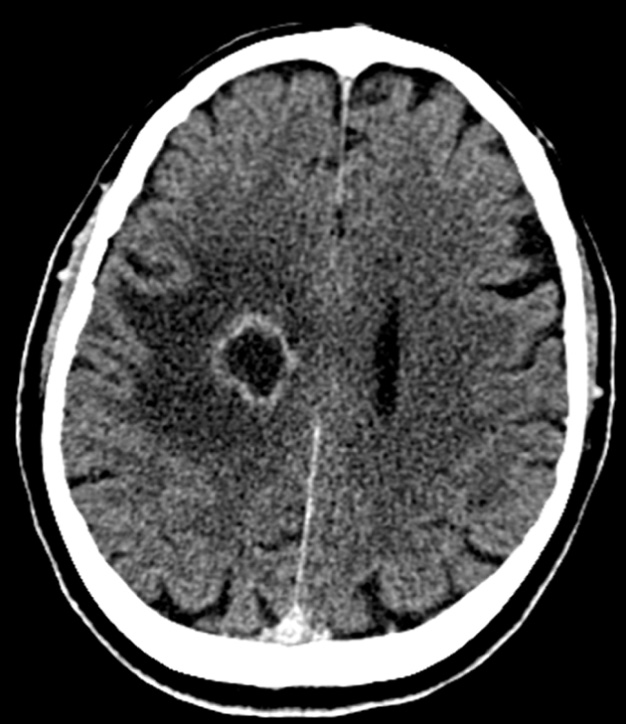
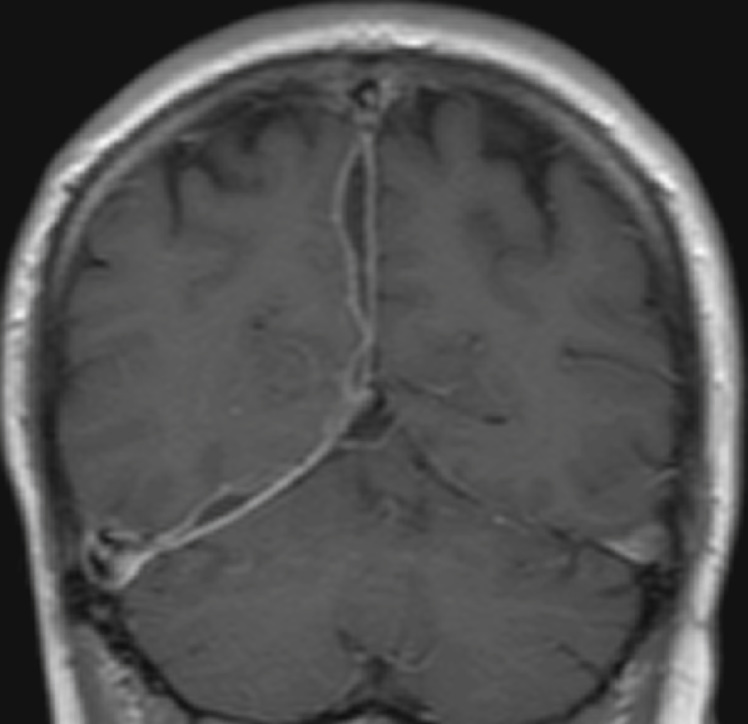
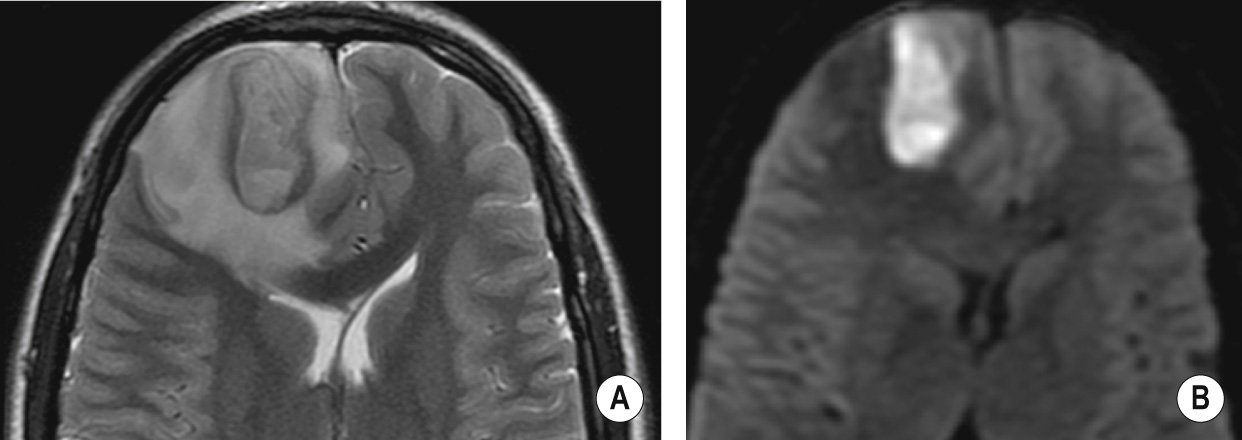

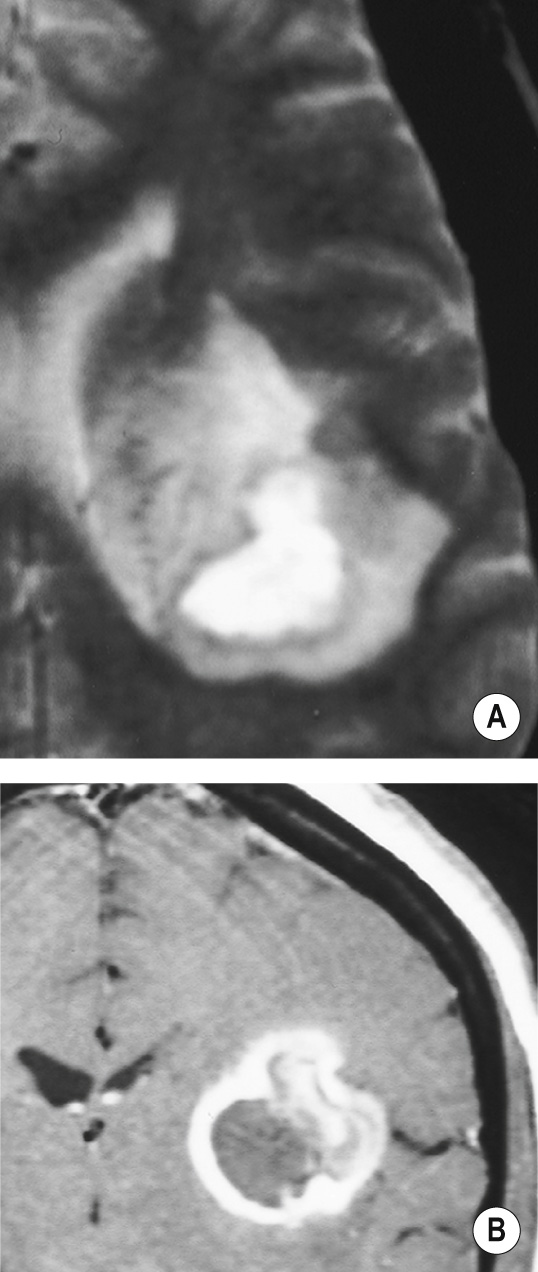
Diffuse inflammation of the brain parenchyma caused by the herpes simplex virus
This is due to the reactivation of latent herpes simplex (type 1) within the trigeminal ganglion or by reinfection via the olfactory route ▸ it is often fatal without treatment
Abnormalities usually visible within 3 days ▸ this is followed by low attenuation within the anteromedial temporal lobe (± involvement of the insula or the orbital surface of the frontal lobe) ▸ haemorrhage is not usually prominent and is a late feature ▸ there can be patchy or gyriform enhancement ▸ initially unilateral, progressing to bilateral
Perfusion CT: this is increased during the acute phase
T2WI/FLAIR: there is high SI within the antero-medial temporal lobe within 2 days of onset ▸ the abnormal SI is mainly cortical (with secondary subjacent white matter involvement) ▸ it is more sensitive than CT for detecting haemorrhagic foci (particularly with T2* or SWI)
DWI: cortical high SI
Intrapartum infection with the herpes simplex virus (type 2)
Patchy white matter oedema ▸ cortical areas of increased density (which are not limited to the temporal lobes) ▸ there can be lesion progression to a multicystic encephalomalacia
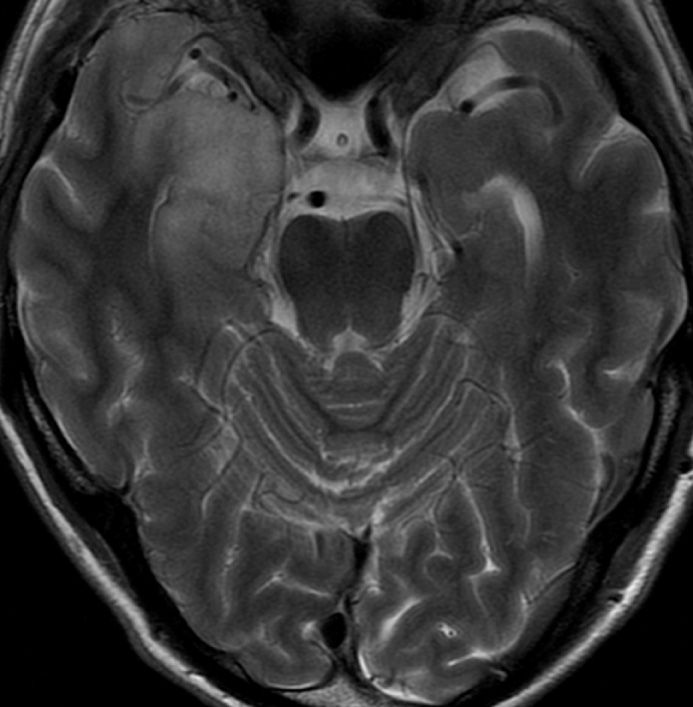
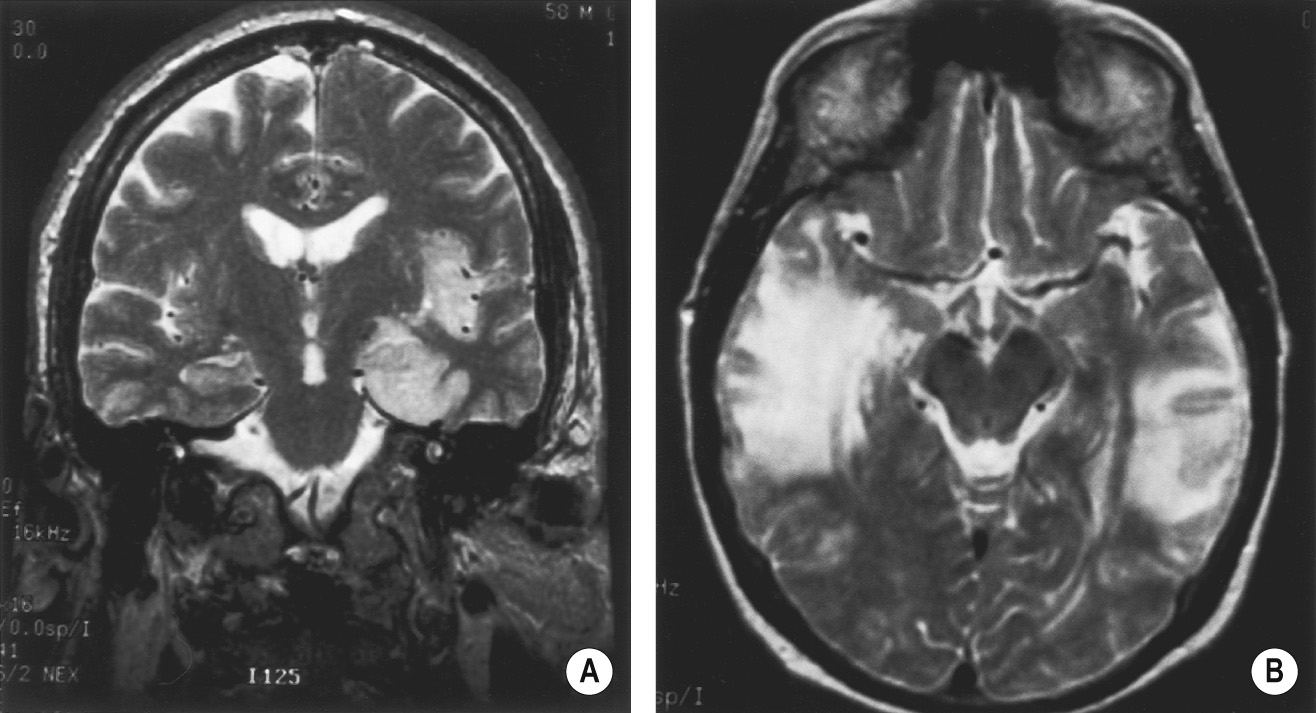
Bacterial infectious inflammatory infiltration of the leptomeninges ▸ common causes in adults are S. pneumoniae and N. meningitidis
This is usually normal in uncomplicated pyogenic meningitis ▸ CT is useful for detecting any complications (e.g. hydrocephalus, a subdural empyema, an abscess or a cerebral infarction)
FLAIR: high SI (this is non-specific and can also be seen with SAH and leptomeningeal metastases) ▸ FLAIR + Gad: meningeal enhancement (this may be more sensitive than T1WI + Gad)
CNS involvement is seen in 5% of cases (predominantly affecting patients <20 years old) ▸ tuberculous meningitis is the most frequent manifestation (involving the basal leptomeninges)
A tuberculoma can also develop (usually at the corticomedullary junction) ▸ a tuberculous abscess is a rare finding
There is obliteration of the basal cisterns by isodense or slightly hyperdense exudates ▸ there is avid enhancement of the basal meninges extending into the ambient, sylvian, pontine and chiasmatic cisterns
This meningeal exudate obstructs CSF resorption and causes a communicating hydrocephalus ▸ meningeal calcification is rarely seen with healing
An arteritis of the penetrating arteries at the base of brain can lead to infarctions of the basal ganglia and internal capsule
This is more sensitive than CT for the above signs
Differential: fungal meningitis ▸ neurosarcoid ▸ carcinomatous meningitis
A small rounded lesion which is isodense or hypodense to brain ▸ there is variable surrounding oedema ▸ there is homogeneous enhancement (with solid lesions) or rim enhancement (with central caseation or liquefaction) ▸ lesions rarely calcify with healing ▸ brainstem involvement is uncommon
The ‘target sign’ of central high attenuation with rim enhancement is not pathognomonic for a tuberculoma
T1WI: low SI ▸ T2WI: high SI (but low SI with caseation) ▸ T1WI + Gad: solid lesions demonstrate homogeneous enhancement ▸ ring enhancement is seen with caseation
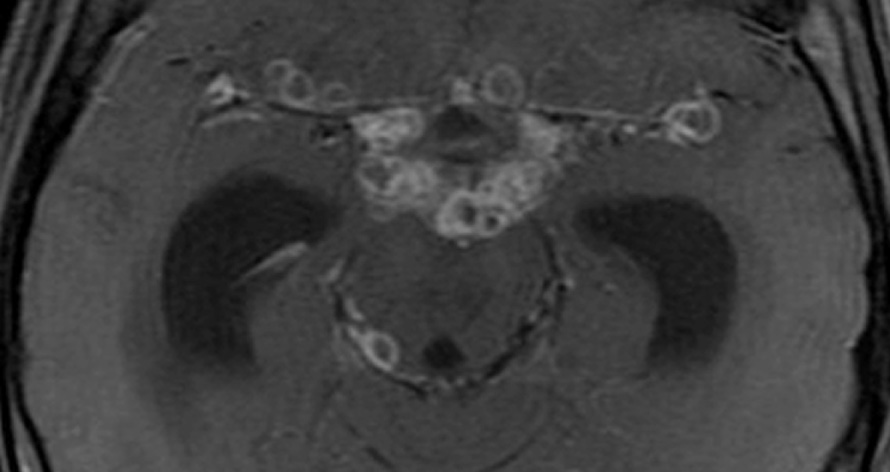
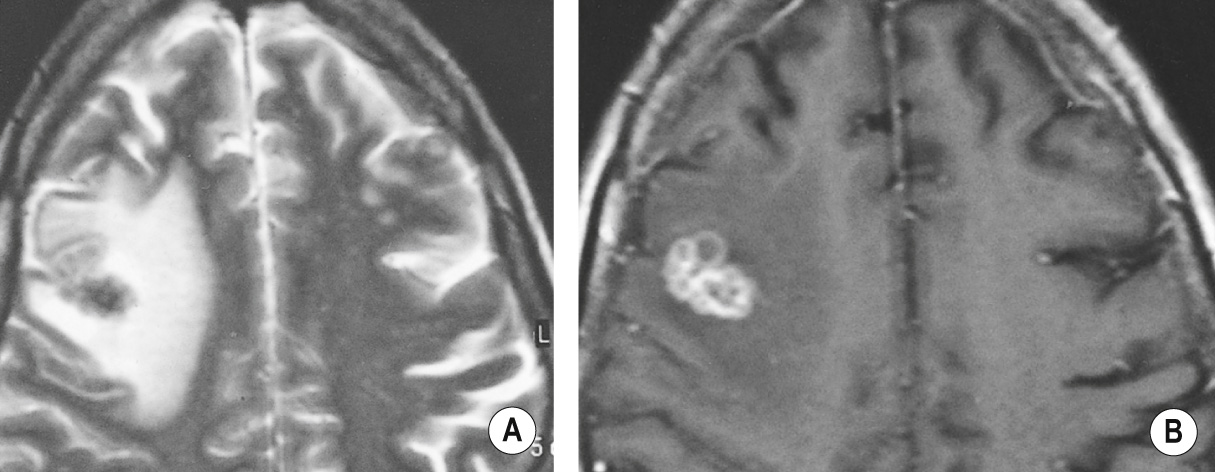
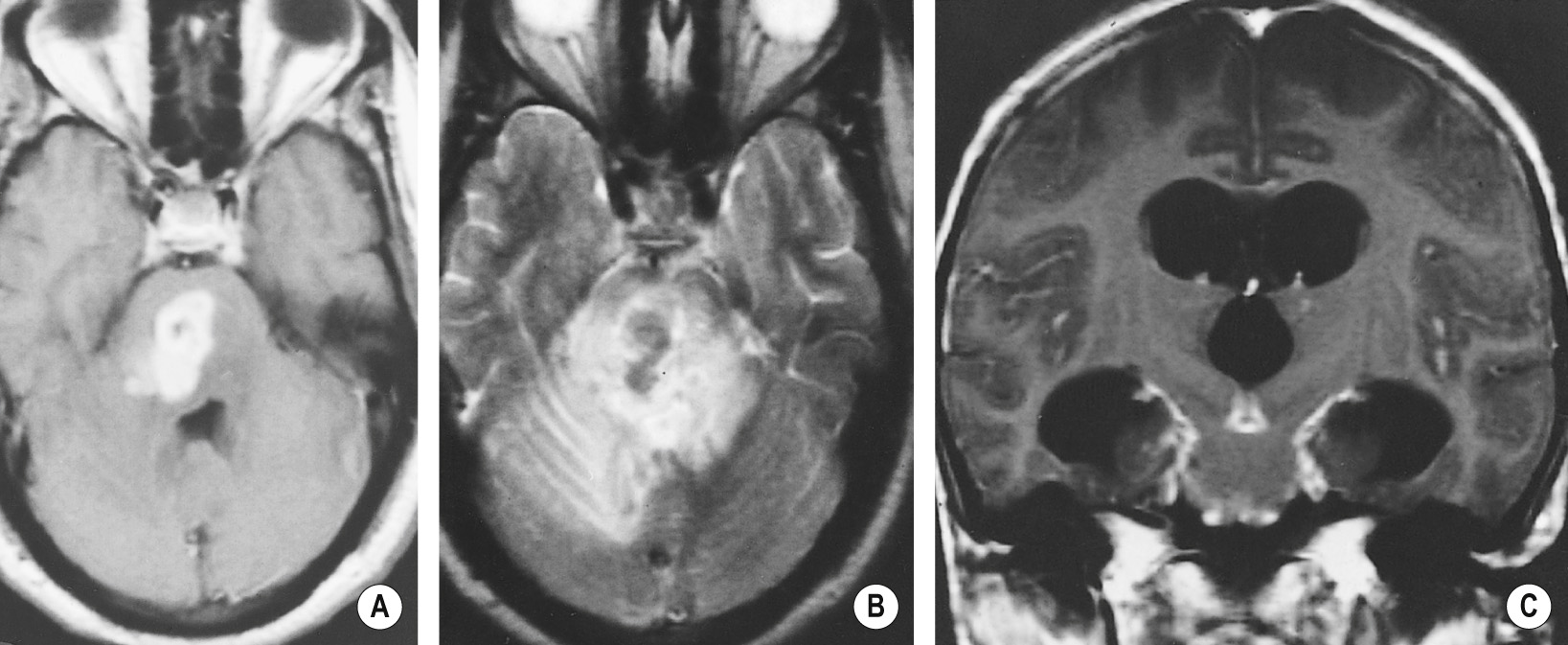
Become a Clinical Tree membership for Full access and enjoy Unlimited articles
If you are a member. Log in here